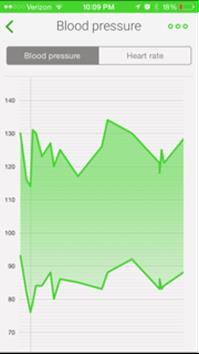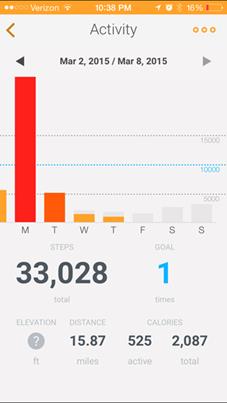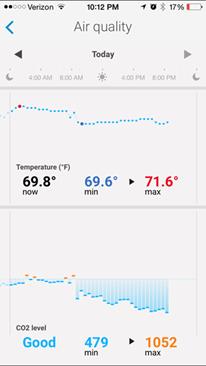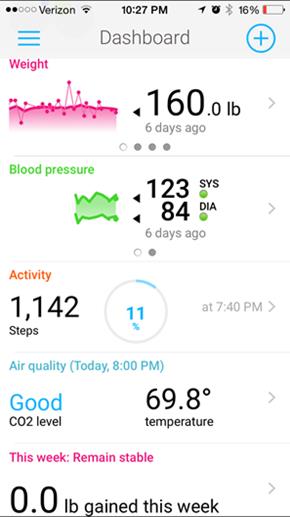In just a few short weeks our lives are going to change in unimaginable ways. That is, if Apple CEO, Tim Cook has his way. The new Apple Watch is now confirmed to go on sale April 24. In anticipation of this launch, the world is aflutter with stories, rumors, hints, and hopes for this new platform. And while Apple addressed some of the rumored functionality in its launch event yesterday, questions remain.
We want the next category killer. Or at least that feeling we get when there is something bright and shiny that we “must have”. In fact, research has shown that an area of the brain called the nucleus accumbens, the brain’s pleasure center, kicks into gear and floods the brain with dopamine when we buy something new.
But just how much dopamine is going to get released over the Apple Watch remains to be seen.
One of Watch’s killer apps is rumored to be a comprehensive set of health-tracking sensors. Of course, nobody really knows what it will track, except for a few elite Apple employees. The list of possibilities might include sensors for heart rate, blood sugar, blood pressure, air pressure, altitude, temperature, weather, ultraviolet light exposure, calories, steps, and sleep.
Apple already released its new HealthKit app as a teaser for Watch in late 2014. Since that time Apple has dropped hints about the health and fitness possibilities in Watch. And at yesterday’s event, the company unveiled a new ResearchKit feature. It includes tools to allow patients to track their symptoms and opt to share that data with research partners such as the Dana-Farber Cancer Institute, the University of Oxford, and Stanford Medicine. This is interesting for academics and clinicians, but not exactly a “must-have” for users. It’s also not a brand new idea: There are already numerous symptom tracker apps in the Apple App Store, and they’ve mostly seen lukewarm adoption, with the exception of pregnancy apps (the most popular is from the publisher of the widely read “user manual” for pregnancy, “What to Expect When You’re Expecting”). Other apps seem to focus on specific condition management, such as diabetes or pain tracking, but these haven’t seen significant traction
Which may be why Apple seems to be focusing primarily on physical fitness when it comes to pitching Watch’s health apps.
 But there are other platforms that already far outweigh the functionality of the Apple HealthKit. Take Withings, for example. The French company has quietly led the connected-health revolution by leveraging the Internet of Things. Since 2009, Withings has built a range of products that cover the whole health spectrum. They divide the categories into “wings”, as in the wings of their signature butterfly logo. The wings are Weight, Activity, Sleep, and Heart. In order to track these items, Withings has created some very sexy hardware.
But there are other platforms that already far outweigh the functionality of the Apple HealthKit. Take Withings, for example. The French company has quietly led the connected-health revolution by leveraging the Internet of Things. Since 2009, Withings has built a range of products that cover the whole health spectrum. They divide the categories into “wings”, as in the wings of their signature butterfly logo. The wings are Weight, Activity, Sleep, and Heart. In order to track these items, Withings has created some very sexy hardware.
The cornerstone of the hardware offering is the Withings Smart Body Analyzer. That’s a super-fancy, French term for what is known in America as the bathroom scale. Of course, everyone knows that the modern bathroom scale followed the introduction of the delectable and ever-delicious French Pommes Frites; better known in the states as the French fry. Some would argue that without the French fry there would be no reason to own a scale, but I digress. The scale collects a wide variety of information every day. And it reports all of this data to a Withings app on my Apple iPhone 6 Plus (ironic, huh?). It’s all done through a wireless, Bluetooth connection.
At any time I can drill down for a deeper look at a category. For example, I can pull up my weight history for a gastronomic trip down memory lane. This is particularly helpful during the holidays when I like to see how fat I’m getting versus last year. Note that the trend line is going in the wrong direction. Gotta work on that.
 I recently visited my Primary Care Physician for my annual physical. After some small talk about fishing and golf, Dr. McClatchey informed me that my blood pressure was starting to spike. Luckily I knew that the Withings platform includes integration of data from their Blood Pressure Monitor. So I purchased the Blood Pressure Monitor on Amazon for about $169. As you can see from the graphic, I’ve been following “doctor’s orders” and tracking on a regular basis. Once I’ve created a record of my readings, I can upload the results to my doctor for review.
I recently visited my Primary Care Physician for my annual physical. After some small talk about fishing and golf, Dr. McClatchey informed me that my blood pressure was starting to spike. Luckily I knew that the Withings platform includes integration of data from their Blood Pressure Monitor. So I purchased the Blood Pressure Monitor on Amazon for about $169. As you can see from the graphic, I’ve been following “doctor’s orders” and tracking on a regular basis. Once I’ve created a record of my readings, I can upload the results to my doctor for review.
 One of the biggest reasons consumers purchase wearable technology is for activity tracking. Once again, Withings scores by tracking my steps through my smartphone. It’s pretty much always in my pocket so I can’t figure out why I’d also want to wear a geeky watch on my wrist to track the same thing. The Withings smartphone app tracks my activity and gives me a historical view of it.
One of the biggest reasons consumers purchase wearable technology is for activity tracking. Once again, Withings scores by tracking my steps through my smartphone. It’s pretty much always in my pocket so I can’t figure out why I’d also want to wear a geeky watch on my wrist to track the same thing. The Withings smartphone app tracks my activity and gives me a historical view of it.
 The Withings platform also tracks some items that I don’t find too useful. For some reason, my bathroom scale tracks Air Quality and Temperature in my bathroom — at what appears to be 15 minute increments throughout the day. But it’s free, so I don’t complain. Note that today at 10:12PM it was 69.6 degrees in my bathroom and the air quality was Good. I guess I will sleep better tonight.
The Withings platform also tracks some items that I don’t find too useful. For some reason, my bathroom scale tracks Air Quality and Temperature in my bathroom — at what appears to be 15 minute increments throughout the day. But it’s free, so I don’t complain. Note that today at 10:12PM it was 69.6 degrees in my bathroom and the air quality was Good. I guess I will sleep better tonight.
 The Withings Graphical User Interface is simply amazing. Just take a look at these screen shots on my iPhone 6 Plus. My dashboard displays my body weight, Blood Pressure, Steps, Air Quality all on one screen. It also tells me whether it’s okay to order dessert after dinner tonight by tracking my daily weight gain/loss. That’s important stuff.
The Withings Graphical User Interface is simply amazing. Just take a look at these screen shots on my iPhone 6 Plus. My dashboard displays my body weight, Blood Pressure, Steps, Air Quality all on one screen. It also tells me whether it’s okay to order dessert after dinner tonight by tracking my daily weight gain/loss. That’s important stuff.
For the Apple Watch to take off, it will need to carve out a distinct value proposition that a smartphone alone cannot deliver. After all, we all pretty much “wear” our smartphones everywhere we go. The combination of Apple’s iPhone 6 technology, coupled with my Withings products seem to make the health-related aspects of Apple Watch unnecessary. Or at least they significantly raise the bar from a capability standpoint. Because the smartphone has become such a ubiquitous part of everyday life, a watch will need to present a significantly higher value proposition. For this digital health geek, I just don’t see it.
Tom Greene is a healthcare consultant with Alliant and works with Fortune 500 companies. He is also an evangelical Digital Health thinker and Board member at Mana Health, Amendia and Vivex Biologics. You can follow him on Twitter @greene_tom.
[Explore other VentureBeat opeds here.]
VentureBeat's mission is to be a digital town square for technical decision-makers to gain knowledge about transformative enterprise technology and transact. Learn More

